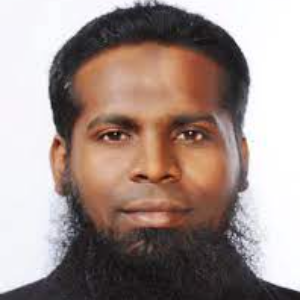Title : Application of nanomaterials as spacecraft shields
Abstract:
Impact events are classified into three: low velocity, high velocity or ballistic impact and hypervelocity impact. Hypervelocity impact damages occurs at the range of 5 to 20 km/s and it is a peculiar type of impact happening in space due to space debris (typical travel velocity 10 km/s) or meteorite/micrometeorite (typical velocity 20 km/s). Sandwich Composite panels and laminates are used in satellites for its specific strength and stiffness characteristics. Most dangerous characteristics of the hypervelocity impact event is the debris plume emanating from the rear face of the composite materials. The emanating particles will damage the neighbouring components and subsystems inside the satellite. If there are human beings in the space vessel as in International Space Station (ISS), then menace of hypervelocity impact will be substantial.
There are various sources of space debris in the space particularly in low earth orbits. The extend of the hypervelocity damage depends on size of the target material and size of the impactor. If the target material is thin and impactor is tiny object, the impactor will pierce the target and hole will be created in the target. If the target material is thick and impactor is tiny object, it will result in surface damages and degradation without punctured holes. If the impactor is large object, it will results in destruction of the target and orbital change. Destruction of the target will results in large numbers of space debris, which will magnify the risk of hypervelocity impact by acting as impactor. The ASAT (Anti Satellite Missile) launched by India during march 2019 have created 400 pieces of orbital debris and risk of orbital debris collision with ISS is estimated to be increased by 44% due to hypervelocity impact damage events.
The experimental simulation of hypervelocity impact damage events are highly challenging at earth. There have been experimental research in NASA and in ESA (European Space Research and Technology Centre, Netherlands). High velocity impact have been simulated using light gas gun in which particles of 1 cm size is propelled up to 8-9 km/s. To protect the Stardust probe from hypervelocity impact, NASA used a type of Whipple shield that consists of relatively thin outer shield, which is placed at a specific distance from the main spacecraft wall. Various shield configurations proposed to control the hypervelocity damage to space materials. International space station alone uses over 100 shield configurations with high-risk areas protected with better shielding.
This speech presents a review of growing risk of satellites due to space debris impact. The mechanism of mitigating the risk will also be discussed and challenges in future due to ever-increasing space debris/space junk will also be highlighted.



